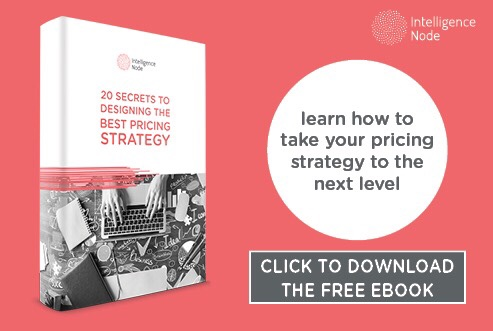
When you’ve invested the time and money to bring relevant traffic to your website, it can be a huge disappointment when your products don’t sell the way you expect them to.
Especially when you use good images and optimize for the search engines. So, what’s missing?
According to Marketing Profs, it might be your product descriptions. And that’s a problem, because, as the company implies, “The product description is one of the most important aspects of your online shop when it comes to conversion.”
Here are 6 rules to follow in order to create product descripions that sell:
Rule #1 – Know Your Customer
“Perhaps the most important element of a high-converting product description is that it is written with an understanding of who the ideal customer is for your offering,” states Marketing Profs.
Consider your core audience and make a list of the ways your product fits into your customers’ lives. For example, what are their main needs? How and/or where would they use your product? How do they prefer to buy—online or instore?
Take the information you gather about your customers and use it as the foundation of your product descriptions, framing the content from their point of view.
Don’t forget to infuse the product copy with your brand voice. This will deepen the relationship you have with your customers, providing a more consistent user experience.
Rule #2 – Make Sure Product Details are Accurate
“Creating accurate product descriptions takes the element of surprise out of an online purchase,” says Izea. “It also lets people know that they can trust your brand.”
When you consider that about half of all customers have returned an item because of an inaccurate product description and that more than half of customers who’ve returned something to a retailer aren’t likely to make another purchase from that brand, the stakes are high.
Think about the information your customers would find most helpful to know before they decide to make a purchase. Your descriptions should be used to answer your customers’ questions before they even need to ask them. This will help you prevent returns, refunds, and negative reviews down the road.
Rule #3 – Follow a Keyword Strategy
As Marketing Profs points out, “Product descriptions are an important element of your on-site SEO efforts; they are, after all, written content that helps bring relevant organic traffic to your website.”
Tools like Google’s Keyword Planner can help you discover which keywords will be most relevant to your products, guiding the comprehensive keyword strategy for your site, whether you’re creating blog posts, product descriptions or other website content.
With a keyword strategy, your product descriptions will convert better because they’ll help search engines recognize that your product pages are relevant to what people are searching for.
Rule #4 – Create Unique Descriptions for Each Product
When writing product descriptions, it can be tempting to review competitors’ sites and even your own existing descriptions for a little inspiration. But the best product descriptions speak specifically to each unique item on the product page.
“Creating completely tailored descriptions will help you bring in the most relevant traffic for each of your product pages, and help you avoid pitting your own pages against each other in search engine results,” advises Marketing Profs.
While it’s common to use phrases like “great value,” or “high quality” in descriptions, these overused—and empty—phrases are ones that buyers are so used to seeing that they’re practically ineffective. Instead, your product descriptions should explain why your offering is a great value or high quality.
Create unique descriptions by giving your words more meaning and helping readers understand what makes your product different from all the rest.
Rule #5 – Target High-intent Visitors
“One of the most helpful SEO tips for product pages is to work in language that speaks to buyer intent,” says Marketing Profs.
Use keywords that a searcher would likely use if they were further along in the sales funnel (i.e. when they’re closer to purchase than someone who’s merely browsing for more information).
For instance, the words “b2b lead generation” are far more general than something like “lead generation workshops for b2b marketing teams.” Being more specific increases the likelihood of attracting individuals that are more serious about your product or service.
By using language that focuses on high-intent visitors, you’ll draw the right traffic to your product pages—not just any traffic.
And that means more conversions.
Rule # 6 – Take Advantage of Meta Descriptions
A meta description (sometimes referred to as a meta description attribute or tag) is information that describes and summarizes the contents of your page for the benefit of users and search engines. While it doesn’t affect your ranking, meta data serves as “teaser text” that can lure searchers into clicking on your result instead of another.
If you want to craft a compelling meta description, consider the following questions:
- What are you offering?
- How will it help make someone’s life easier?
- Why should someone buy it from your company?
Meta descriptions have a 155-character limit, leaving little room for “fluff”. Still, they can be incredibly valuable for attracting organic traffic that converts.
Conclusion
According to Pew Research Center, 80% of people in the US who shop online have made a purchase that came with unwelcome surprises, whether it was a grill that was meant for charcoal but turned out to be gas-powered, or a piece of furniture that wouldn’t fit through the front door of their home because the information online was incorrect.
You can help shoppers avoid the unexpected when they purchase products on your website by providing detailed, informative product descriptions about every item you have for sale, suggests Izea.
“Your product descriptions shouldn’t push your product so much as cut to the main points about why it will improve your customer’s life,” says Referral Candy. “And if you can convince your customers of that, then your sales will increase.”

